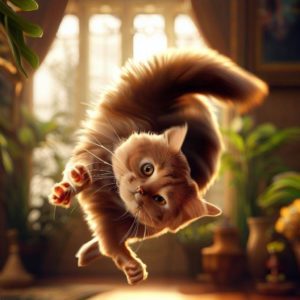In the quiet sanctum of each living cell, a dance is underway. It’s a dance of DNA, of chromosomes spiraling in a waltz orchestrated by the clock of life. At the tip of each chromosome, a mysterious figure leads the dance—a telomere. Invisible to the naked eye, these telomeres play a role as profound as it is elusive. They set the tempo, guiding each cell through its lifecycle. And as our pets age, this ballet takes on new forms, new rhythms, and new meanings. Let’s draw back the curtains and witness this magnificent performance that holds the secrets of aging.
Chapter 6: The Variations: A Tapestry of Unique Dances Through Time
The Intricate Choreography of Individual Lifespans
In the grand theater of life, no two performances are the same. Just as each dancer brings their unique flair to a performance, so does each pet in the dance of life. Some waltz through their years with an elegance that belies their age, while others sashay with a vivacity that’s all their own. At the heart of these variations are the telomeres, the cellular conductors, whose tempo is influenced by a medley of factors. Let’s delve into this fascinating realm where genetics, lifestyle, and environment choreograph a dance that’s as unique as the pet performing it.
The Genetic Blueprint: Telomeres’ Inherited Rhythms
Every dance begins with a basic step, a foundational rhythm. For our pets, this foundational step is set by their genes. Some pets inherit telomeres that naturally shorten at a slower pace, gifting them with a longer cellular ballet. It’s like having a dance instructor from birth who emphasizes long, graceful movements over rapid, frenetic ones.
The Lifestyle Cadence: When Everyday Choices Shape the Dance
Just as a dancer’s routine—diet, practice, rest—shapes their performance, so does a pet’s lifestyle influence their telomeric tempo. A nutritious diet, regular exercise, and a stress-free environment can slow down telomere shortening, allowing for a more extended, more vivacious dance.
Environmental Influences: The Stage Upon Which the Dance Unfolds
Picture a ballet performed in a majestic theater versus one danced on a creaky, old stage. The environment, the very stage upon which the dance unfolds, plays a crucial role. For our pets, factors like pollution, exposure to toxins, or even prolonged stress can accelerate telomere shortening. It’s akin to dancing on a stage full of obstacles—challenging, but not insurmountable with the right care.
The Ensemble Effect: How Fellow Dancers Influence the Performance
No dancer performs in isolation. They are influenced by their fellow performers, their partners, and even their audience. Similarly, our pets are influenced by their fellow furry friends, their human families, and the broader environment. Positive interactions, be it playful frolics with fellow pets or cuddles from their human companions, can create an environment conducive to a slower telomere shortening pace.
The Tale of Two Telomeres: Case Studies in Contrast
Consider two pets—Milo and Whiskers. Milo, an urban cat, faces the challenges of city living—ambient noise, less green space, varied diet—resulting in a faster telomere-shortening rate. Whiskers, living in the countryside, with fresh air, ample space, and a natural diet, experiences a slower pace. Their dances, while both beautiful, have different tempos, shaped by their environments and lifestyles.
The Interlude: Advancements in Understanding Lifespan Variations
The science behind telomere shortening and its variations is a rapidly evolving field. Researchers are continually unearthing new insights into how different factors influence this cellular dance. Each discovery brings us a step closer to understanding why some pets have longer, more spirited dances, and offers hope for interventions that might help all pets enjoy a longer, healthier life.
Celebrating the Unique Rhythms of Every Dance
As the spotlight dims and the music softens, let’s take a moment to celebrate the unique dance each pet brings to the stage of life. Whether influenced by genetics, shaped by lifestyle, or molded by the environment, each dance is a testament to the individual journey of that pet. The variations in the dance, influenced by the pace of telomere shortening, make each performance unique, poignant, and worthy of a standing ovation. As we applaud, let’s remember that every dance, regardless of its length or tempo, is a celebration of life, a performance that touches the heart and uplifts the soul.








